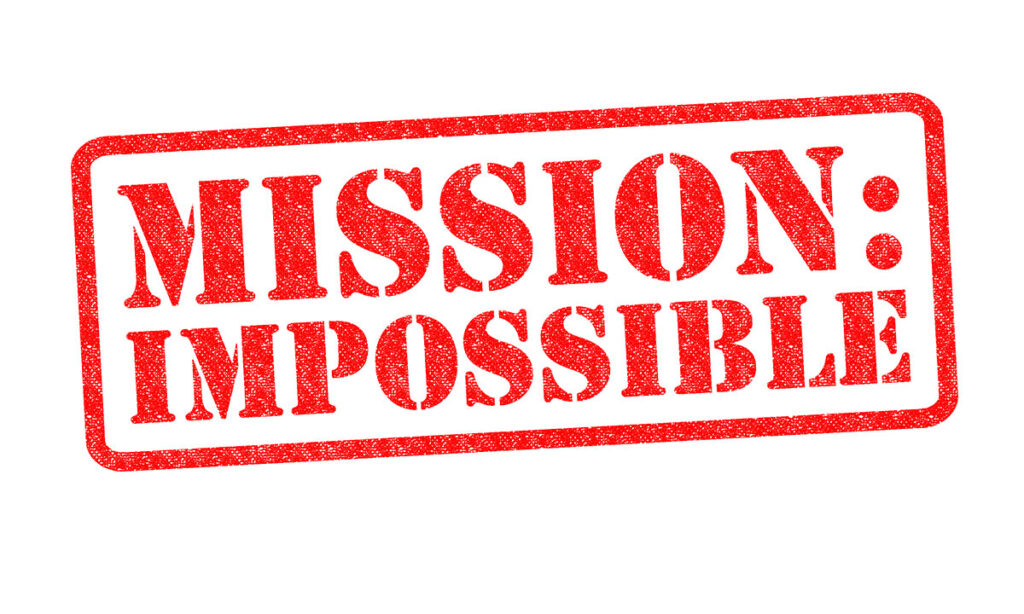Your mission, should you choose to accept it……
These were the words so popularly spoken in the iconic American television series, Mission: Impossible. The television show aired on the CBS Network from 1966 to 1990. More recently, actor and producer Tom Cruise reinvented the show as an action thriller in a series of Hollywood box office hits. Since its inception, the plot of the show featured a secret agent tasked with exposing a sinister plan conceived by an evil tyrant. The secret agent’s ultimate goal was to prevent the world from global disaster by the end of the show. With this seemingly impossible mission, the secret agent and his team would always vanquish the impending threat and save the day!…. at least until the next show aired.
What is very interesting about Mission: Impossible is the phrase itself. It implies that missions are impossible, but that would be false.
In business, a mission is often created as an abstract goal or object of achievement. In strategy plan development, the mission is one of the five key components that every strategic plan should include. This is a basic component that should be developed by an organization seeking to create a first-time strategic plan or maintenance of an existing one.
According to corporatefinanceinstitute.com, a company’s mission statement should define “what it exists for and what purpose it serves. Every company should have a precise statement of purpose that gets people excited about what the company does and motivates them to become part of the organization”.
Here are snippets of a few mission statements from popular brands around the world:
The Walt Disney Company
“entertain, inform and inspire people around the globe”
Microsoft
“to empower every person and every organization on the planet to achieve more”
McDonald’s
“to be our customers’ favorite place and way to eat and drink”
Pfizer
“innovate every day to make the world a healthier place”
An organization’s mission should be aspirational including ideal objectives that may be somewhat impossible to achieve, similar to the meaning behind Mission: Impossible. While an organization’s vision statement is the practical goalpost, the mission statement is attitude-setting for what the organization hopes to accomplish. One of the shortest mission statements comes from Berkshire Hathaway CEO and legendary investor Warren Buffett which simply says, “delight the customer”. Although succinct, it’s indelibly impactful and sets the way of thinking for the entire organization.
While most organizations understand the criticality of a strategic plan, many struggle with the approach to develop the plan; even the thought. That’s why iSeek Solutions developed its strategic plan development workshop. The workshop is a multi-session effort facilitated by iSeek and attended by your organization’s selected team of stakeholders tasked with planning the strategic direction of your organization. iSeek guides participants through the sessions and facilitates a design thinking-like process to elicit the inputs required to establish the five key components of your strategic plan. Don’t wait to begin, renew or refresh your plan. Contact us at [email protected] to start your strategic plan development journey.






